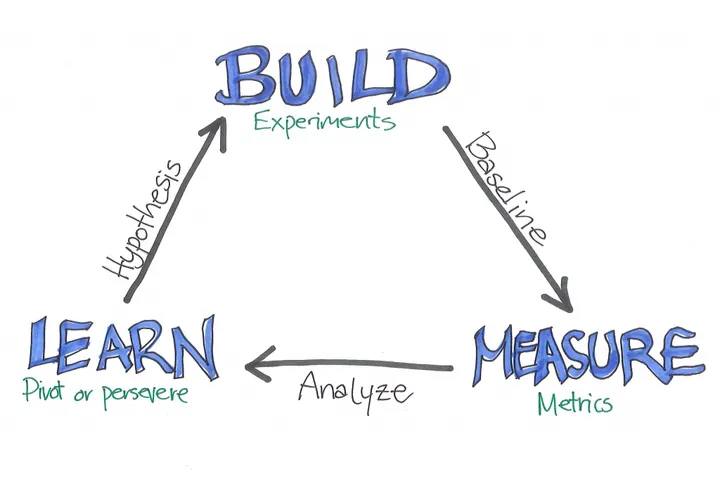Recently I finally finished the last chapter of Lean Startup. I started the reading when joined the startup to the Growth chapter but never finished it. The book is actually an old book, dated back to 2011.
Takeaways
The key take aways of making sure the company is solving the right problem (constantly).
- MVP, get the MVP as fast as one can to prove the need. When there is a need, there is headroom for impact.
- There are growth hacks to have low cost MVPs: Video Video, Concierge, Wizard of Oz etc
- Build-Measure-Learn. MVP is more about build, and it kicks off the process of measure, where to find the good metrics instead of Vanity metrics (those comforting metrics).
- Innovation Accounting. Check the metrics about hypothesis and what to learn from the metrics. Common patterns are more to retrospectively rationalize with the topline metrics movements, rather than (in)-validating the hypothesis.
- Small Batches/Just In Time. Don’t over invest, don’t work on problems before you know what to solve. There shouldn’t be a supply surplus of solutions.
My Resonance
I think the main concept of Lean Startup is find right problem to solve. Or in other words, is focusing on the impact. The main concepts like MVP, Build-Measure-Learn, 5 Whys are practical tactics around how to solve the right problem
The Right Problem
Problem solving is great and fulfilling. However, there are many down side with not solving the right problem especially in a corporate setting. Many times, problem definition is setting the direction and is the strategy itself. I still remembered two quotes from our startup CEO
- If you pick the wrong direction, the harder you work, the more wrong you are.
- Solving the wrong problem is like everyone succeeded and the company failed.
Concretely, I have seen many such cases during my career. Many times the cases are there are top down pressure/preferences.
- Building What User Doesn’t Like.
- Optimizing Vanity Metrics. There are many metrics that looks good on the face value but doesn’t point
Some would argue that all of those will have to go top down. It definitely needs the buy-in and blessings from senior leadership. But those concepts might be more familiar by people with a startup experiences and tortured by uncertainties. Waiting those to be organically adopted is not a choice.
Lean Startup in Action
I personally like challenges more about those uncertainties building new stuff over optimizing existing stuff. There are several things I observe lean startups in both startup & corporative settings.
- One is in a corporative settings, where we are working with a cool new technologies. The problem to solve is to leverage this technology to improve our existing product. The leap-of-faith is that the technology should work in our cases and improves our edges. However, the application is not straightforward. We came up with a list of investments, validate those hypothesis and pivot whenever the online experiment is not good. The open question is still, when to pivot or preserve, especially we always know there is something more we could do. Eventually, after rounds of experiment we found the technology is cool but might not be the solution for our user problem.
- One is in a startup settings. Our CEO used to be a serial entrepreneur. We did a lot of growth hacking thing to validate our user needs before any serious investments into building features. The user need verification is emphasized.
What’s Next?
The lean startup is an interesting starting point and I’m very interested in exploring further into the Toyota methodoligies. Adding the referenced https://www.goodreads.com/book/show/376237.Toyota_Production_System to my reading list.
